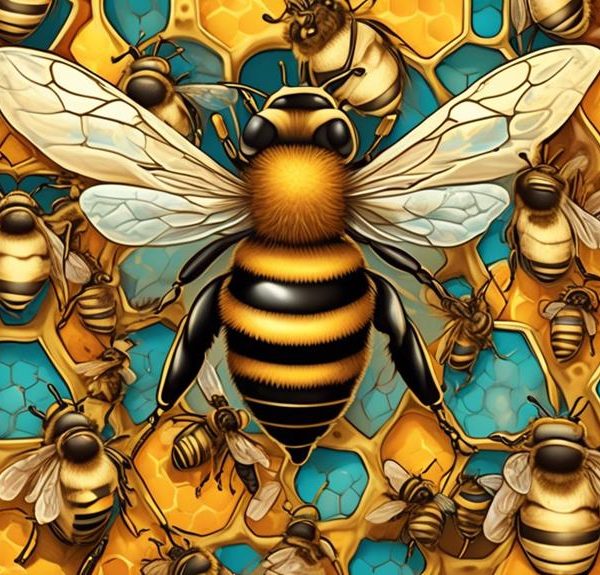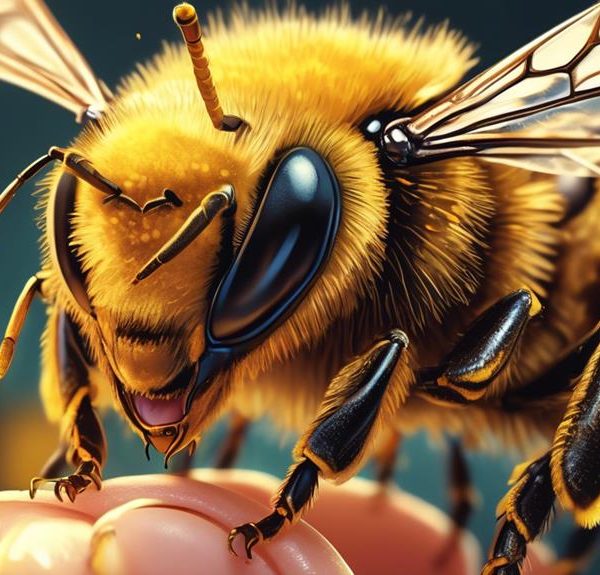Astonishingly, honey is a result of bees' regurgitation process; delve into this intriguing, slightly unsettling journey of honey production!
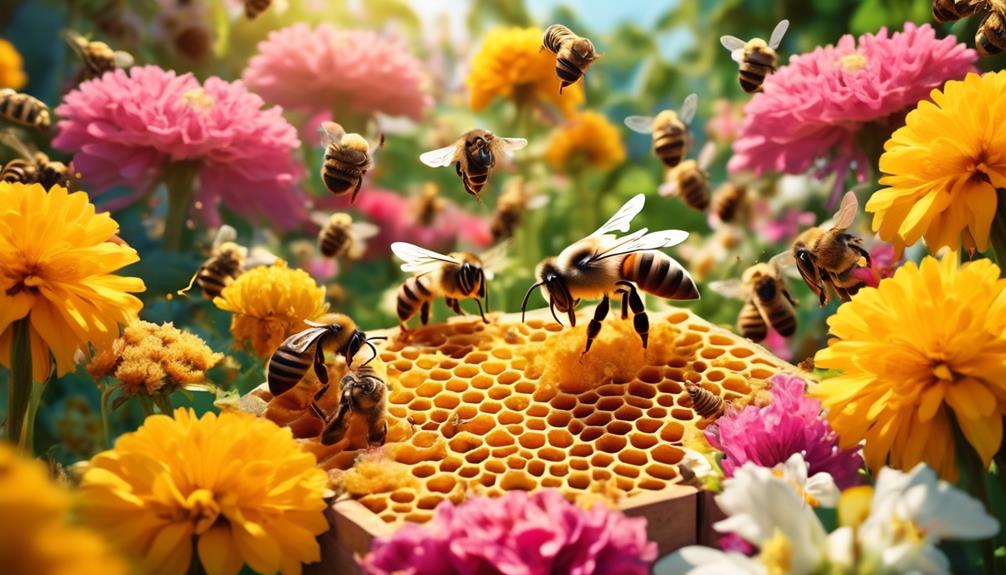
Why Do Bees Vomit Honey?
Did you know that a single honeybee will typically produce around one twelfth of a teaspoon of honey in its lifetime?
You might wonder how these tiny creatures manage to produce such a sweet and viscous substance.
Well, it's not as pleasant as you might think. Honey is, in fact, the result of an intricate and somewhat stomach-churning process involving bees regurgitating their stomach contents.
But hold on, don't let this put you off your next spoonful of honey just yet. There's more to this fascinating process than meets the eye.
Key Takeaways
- Bees have two stomachs, one for eating and one for storing nectar.
- Bees repeatedly regurgitate nectar to break down complex sugars and reduce water content, transforming it into honey.
- The warm hive environment facilitates the evaporation of water from the nectar, turning it into honey.
- Honey serves as food for many other species and contributes to the food chain, making bees' honey-making process crucial for ecosystem resilience.
Understanding Bee Anatomy
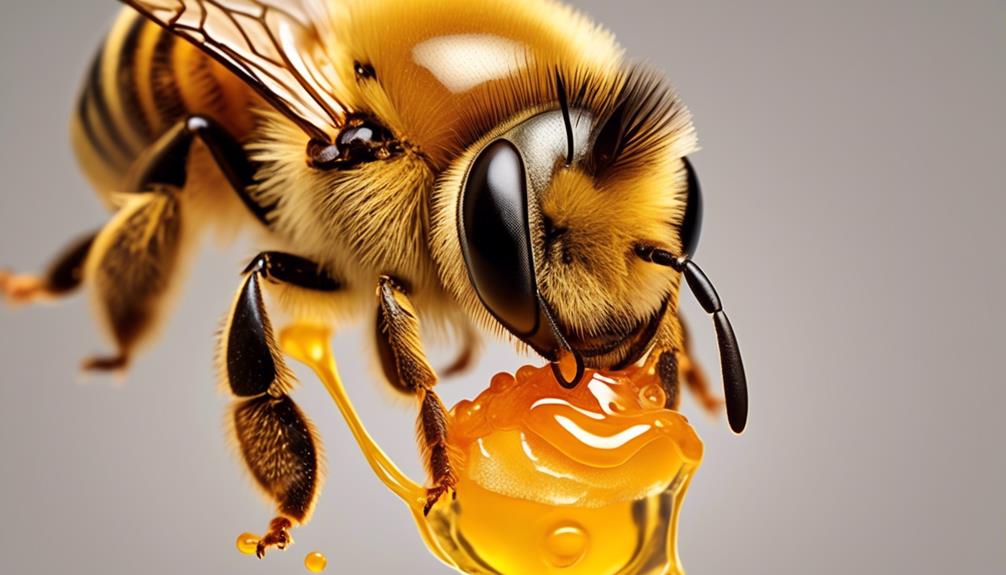
To fully grasp why bees vomit honey, it's crucial to first understand their complex anatomy. As a bee, you're equipped with two stomachs: the first one for eating and the second, known as the honey stomach, for storing nectar collected from flowers. This honey stomach can hold nearly 70mg of nectar, about half your body weight, and it expands like a balloon as it fills.
At the cellular level, your honey stomach acts as a living factory. Enzymes within break down complex sugars into simple sugars making the nectar less susceptible to bacteria. This enzymatic process is essentially the first step in honey creation, and it occurs within you.
Return to the hive, and you regurgitate the processed nectar. But it's not yet honey. Worker bees take over, chewing the nectar to further break down the sugars. This chewed-up nectar is then deposited into the honeycomb's cells. The bees fan their wings to evaporate any remaining water, and voila, the nectar transforms into honey.
This understanding of your biology is vital to comprehend why bees, like you, vomit honey.
The Process of Nectar Collection
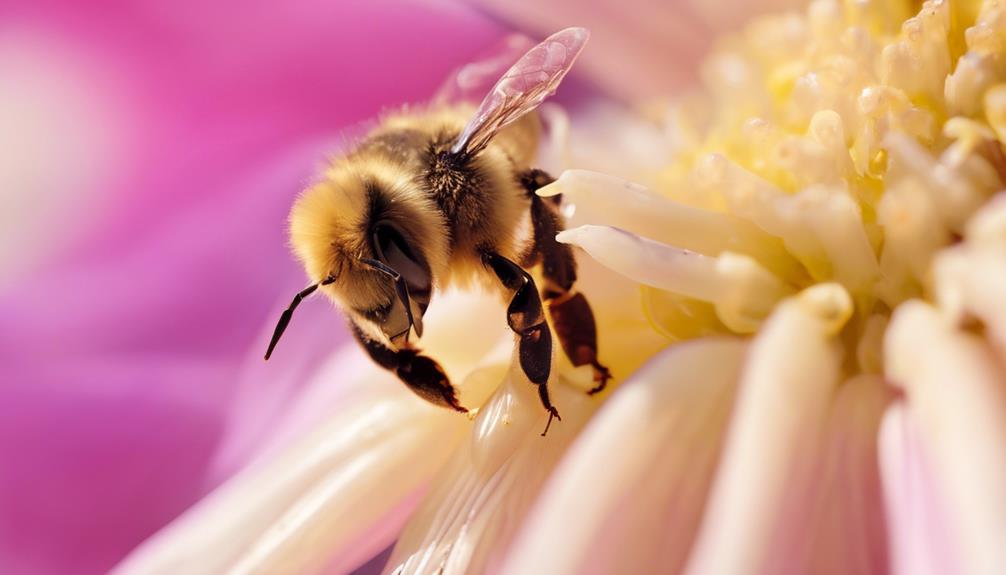
Building on the understanding of bee anatomy, let's now explore the intricate process of nectar collection, a critical precursor to the honey-making process.
As you may know, bees extract nectar, a sweet liquid, from flowers using their long, tubular tongues called proboscises. This action isn't as simple as it seems. It's a sophisticated process involving numerous steps.
Firstly, a bee lands on a flower and uncoils its proboscis to reach the nectaries, usually deep within the flower. It sucks up the nectar into its honey stomach, a unique organ separate from its true stomach, designed specifically for nectar storage. This nectar contains about 80% water and various sugars.
The bee then returns to the hive and regurgitates the nectar to a 'house bee.' The house bee further regurgitates it to other house bees in a chain process. This repeated regurgitation helps to break down complex sugars into simpler forms. Additionally, enzymes in the bees' stomachs reduce the nectar's water content, thickening it into honey. The bees then store it in honeycombs, ensuring their colony's survival through the winter months.
Thus, nectar collection isn't just fascinating; it's vital to the life cycle of bees and the production of honey.
From Nectar to Honey: The Transformation
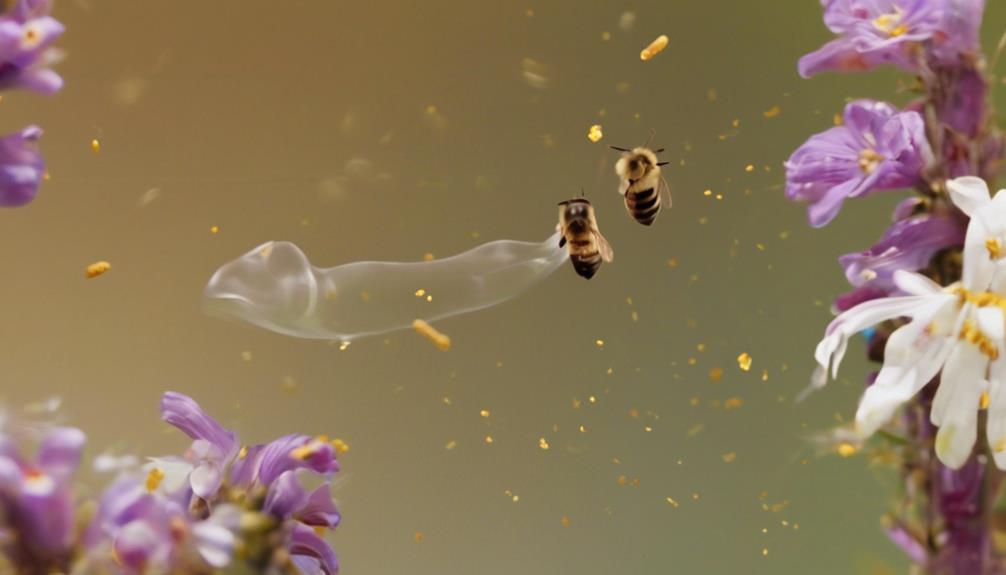
Delving into the heart of the honey-making process, let's examine how bees transform nectar into the sweet, golden syrup we know as honey. When forager bees collect nectar from flowers, they store it in their honey stomachs. On their return to the hive, they regurgitate this nectar, passing it to house bees.
These house bees chew the nectar for about half an hour, breaking down the complex sugars of the nectar into simple ones. This process is called inversion. As they do this, they add enzymes from their glands that further aid in breaking down the nectar.
The partially digested nectar is then deposited into the honeycomb. Here's where the next key step in the transformation happens. Bees fan their wings over the honeycomb, causing water in the nectar to evaporate and the nectar to thicken, creating honey.
The bees cap the honey-filled cells with wax, preserving the honey for future consumption. This is how the nectar's journey ends, transformed into the rich, amber-hued honey we love.
Through this intricate and laborious process, bees give us a sweet insight into their fascinating world.
Why Regurgitation Is Essential
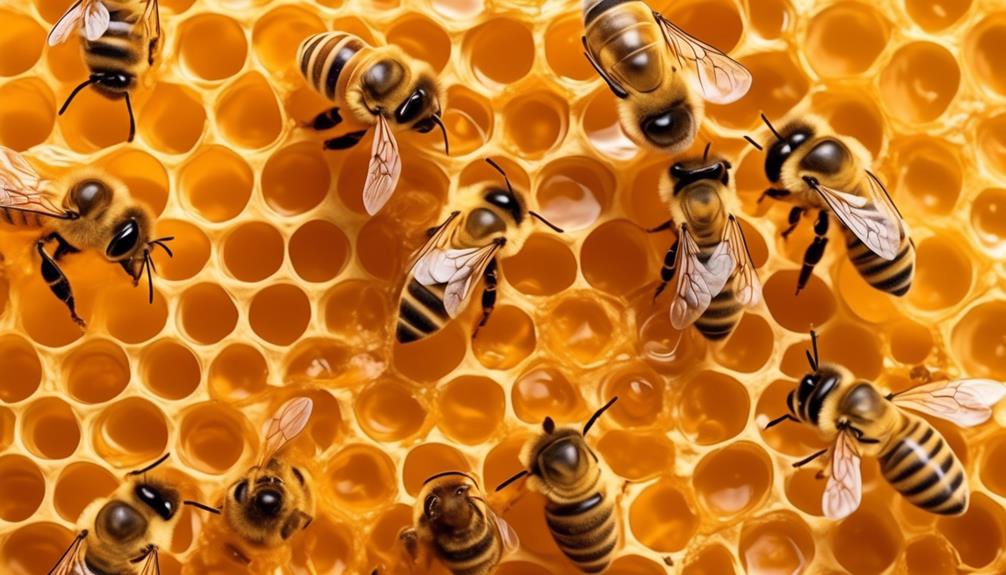
You might wonder why bees go through the seemingly unappetizing process of regurgitating nectar, but this step is absolutely crucial in the creation of honey. This regurgitation process, in essence, transforms nectar into honey.
When bees collect nectar from flowers, it's stored in a special stomach called the honey stomach. Once full, they return to the hive and regurgitate the nectar to hive bees who further process it by adding enzymes that break down complex sugars into simpler ones.
This regurgitation process isn't a one-time event. It's repeated until the nectar becomes partially digested and its water content significantly reduced. The bees then deposit the transformed nectar into the honeycomb cells. The hive's warm environment facilitates the evaporation of remaining water, turning the nectar into viscous honey.
Regurgitation doesn't just allow for the creation of honey, it also enables bees to store food in a form that's long-lasting, easily digestible, and resistant to spoilage. Without this critical process, bees wouldn't have a durable food source during times when nectar is scarce. So, bees' regurgitation process isn't just essential; it's a lifeline.
Implications for the Ecosystem
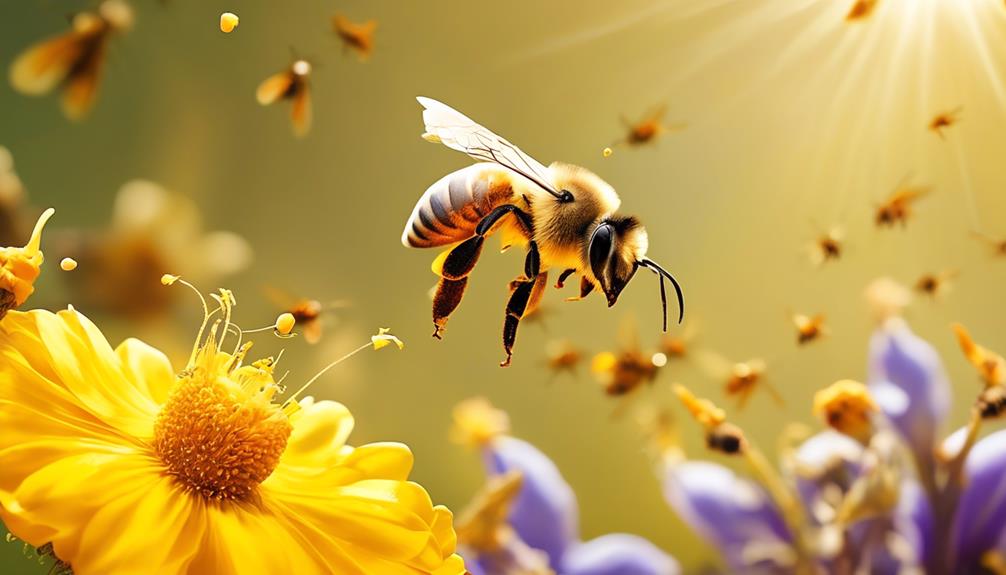
The honey-making process of bees doesn't just benefit the hive; it plays a vital role in maintaining the balance of our ecosystem. As bees forage for nectar, they inadvertently pollinate plants. This pollination is crucial for plant reproduction and biodiversity. You see, without bees and their honey-making process, we'd see a significant decline in plant species, which would have a domino effect on the entire ecosystem.
Now, let's delve into that a little more. When bees regurgitate nectar to make honey, they're also spreading pollen from flower to flower. This pollen transfer facilitates cross-fertilization, promoting genetic diversity among plants. This diversity strengthens the resilience of our ecosystems, enabling them to withstand various environmental stresses.
Furthermore, honey also serves as food for many other species, contributing to the food chain. If bees were to stop producing honey, it would disrupt this chain, potentially leading to the extinction of certain species.
Frequently Asked Questions
Are There Any Health Risks if Humans Consume This Honey Which Bees Vomit?
Absolutely not! Despite being regurgitated by bees, honey is perfectly safe for human consumption. It undergoes a transformation process within the bee, which not only makes it nutritious but also gives it antibacterial properties.
There's no need to worry about health risks. In fact, honey's been a staple in human diets for thousands of years. So, you can continue enjoying its natural sweetness without any concern.
Do All Species of Bees Vomit Honey or Is This Behavior Specific to a Certain Type?
Not all bee species produce honey. It's primarily a trait of honeybees. They collect nectar, partially digest it, then regurgitate it into honeycombs, creating honey.
Other bee species don't have this behavior. They might collect nectar, but they don't transform it into honey.
It's fascinating, isn't it? Nature has its unique ways of creating deliciousness!
Are There Any Similarities Between a Bee's Regurgitation Process and That of Other Insects?
Yes, there are similarities between a bee's regurgitation process and that of some other insects. Like bees, certain insects also consume, digest, and regurgitate their food.
This process often plays a crucial role in their survival, whether it's for feeding their young or for other purposes. However, each insect species has its unique digestive system, so the exact mechanisms and outcomes can differ significantly.
How Does This Vomiting Process Influence the Taste and Texture of Honey?
You're probably curious how the regurgitation process affects honey's taste and texture, right?
Well, it's essential! The bees' enzymes break down the nectar's complex sugars into simple ones, creating that sweet taste we love.
The texture? That's from moisture evaporation. The bees fan their wings over the honeycomb, causing water to evaporate and thickening the honey.
Does the Regurgitation Process Impact the Lifespan or Health of a Bee?
No, the regurgitation process doesn't impact a bee's lifespan or health. It's a natural part of their honey-making sequence. They're designed to consume, digest, and regurgitate nectar without harm.
Actually, it's essential for their survival, as it allows them to store food for colder months. So, don't worry, they're not getting sick. It's just how they contribute to their hive's wellbeing and produce the sweet honey you enjoy.
Conclusion
So, you've journeyed through the fascinating world of bees. You've seen how their unique anatomy enables nectar collection and transforms it into honey through a process of regurgitation.
It's not just about making sweet delights; it's a vital ecosystem role. Now, you understand why bees 'vomit' honey, and how this seemingly gross act is essential for our world's balance.
Isn't nature incredible? So, next time you drizzle honey, remember the amazing process it took to reach your table.

